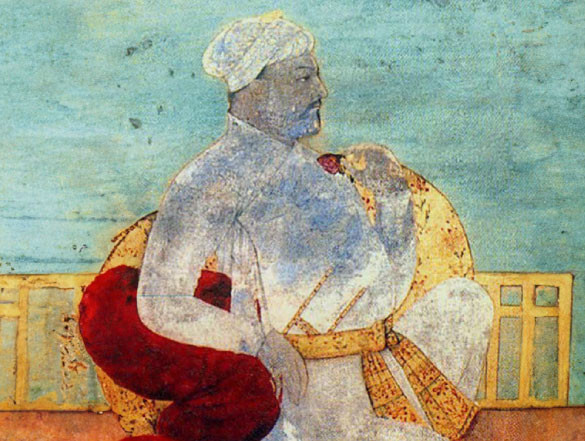- Fort Rd, Toli Chowki, Hyderabad, Telangana, 500008, India
- Visit

Jamshed Quli Qutb Shah, the second ruler of the Qutb Shahi dynasty, reigned for seven years. During his reign, he streamlined the administration of the expanding kingdom and fostered the growth of Persian literature and poetry.
A notable achievement of his rule was the minting of the first coins in Golconda, signifying his autonomous rule. His mausoleum, an octagonal, double-storied structure, stands as a unique architectural landmark within the Qutb Shahi Heritage Park.
Jamshed Quli Qutb Shah's mausoleum stands out among the tombs of Deccan royalty for its distinctive octagonal plan, a departure from the more common square or rectangular forms.
This architectural choice may have been influenced by his lineage. Historical accounts suggest that Jamshed Quli descended from the ruling family of the Qara Quyunlu Turkomans, a powerful Turkic tribe that once held sway over regions like Iran, Armenia, and Azerbaijan. Notably, his mausoleum bears a striking resemblance to the mausoleum of Qara Quyunlu Emirs in Armenia, constructed in 1413 CE. This Armenian monument, with its own octagonal design, hints at a possible inspiration for Jamshed Quli's architectural vision.

The discovery of the garden enclosure wall of Sultan Quli Qutb-ul-Mulk's mausoleum facilitated the appropriate development of the landscape design for the monuments within it, including Jamshed Quli Qutb Shah's mausoleum. The area levels within and outside the enclosure were determined based on trial trenches dug at strategic locations around the monuments to find the original earth levels.
Jamshed Quli Qutb Shah's mausoleum underwent a comprehensive restoration. On removal of 20th century cement from the dome, the lime plaster underneath was also found deteriorated. The dome was repaired carefully with traditional lime plaster. The ornate facade, internal dome, and internal surfaces were all carefully restored using historic techniques, materials and tools by skilled craftspeople. Granite flooring replaced damaged concrete on the plinth, and missing granite edging at the plinth were restored with hand-chiseled stones matching the original texture and color.
The mausoleum of Ibrahim Quli Qutb Shah, the fourth ruler of the Qutb Shahi dynasty, was once adorned with vibrant Persian glazed tiles, traces of which remain visible on the southern façade. These tiles have been carefully documented and restored to prevent water damage, preserving the monument's architectural beauty and historical significance.